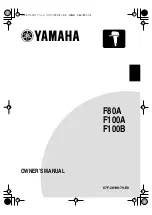
4
dc2196af
DEMO MANUAL DC2196A
Quick start proceDure
External Connections
J1:
Interface connector to DC590 controller or Linduino.
Provides OVP power, SPI interface, and board identifica-
tion.
V
–
, GND, V
+
:
Analog supplies, connected to the LTC2666
V
+
and V
–
pins. Nominally ±15V for operation in all Soft-
Span ranges. Refer to the data sheet for other supply
configurations.
GND:
Four additional ground posts and exposed ground
plane around board edge allow solid connection to pro-
totype circuitry and measurement equipment.
VCC:
Analog supply voltage. Normally supplied by an
onboard LT1761-5 fixed 5V regulator that is powered
from the V
+
supply. For single 5V supply applications, VCC
may be tied directly to V
+
and supplied with 4.5V to 5.5V.
IOVCC:
Digital interface power. No connection to this pin is
required when used with a DC590 or Linduino controller.
If another controller is used, connect to digital supply that
powers the SPI bus controller (1.71 to 5.5V).
REF:
Connection to the REF pin. In internal reference
mode, the reference voltage may be monitored at this
point. Placing REF_SEL jumper in the EXT position allows
an external reference to be connected to this point.
MUX:
Monitor Mux output. Allows surveying the DAC
outputs under software control. Must be measured with
a high impedance meter (output impedance is nominally
2.1kΩ).
VOUT0 to VOUT7:
DAC outputs.
CLR
:
Asynchronous clear input (pulled high to OVP with
a 4.99k resistor). Pull to ground to reset the DAC to the
power-on reset value (determined by MSPx pins.)
TGP:
Toggle input (pulled high to OVP with a 4.99k resis-
tor). A high level on this pin enables software toggling. See
data sheet for a complete description of toggle operation.
LDAC
:
Asynchronous DAC update. If
CS
/LD is high at the
falling edge of
LDAC
, DAC outputs will be updated with
the contents of the input registers. If
CS
/LD is low when
LDAC
goes low, the DAC registers are updated after
CS
/
LD returns high.
OVRTMP
:
Overtemperature pin (pulled high to IOVCC with
a 4.99k resistor). The LTC2666 pulls this pin low if the die
temperature exceeds approximately 160°C. It is released
on the next rising edge of
CS
/LD.

























